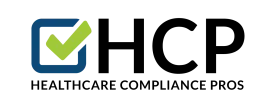Introduction (TL;DR): Is your healthcare organization truly prepared for the escalating complexities of compliance in 2025, or are outdated systems leaving you vulnerable to multi-million dollar breaches and severe penalties? This guide cuts through the noise to reveal the absolute must-have features in modern compliance management software, showing you how the right technology can transform regulatory obligations from a burden into a powerful strategic asset for protecting patients and your practice.
Essential Healthcare Compliance Management Software Features: A Complete Guide for 2025
The intricacies of healthcare compliance have become a defining challenge for organizations over the past decade. With regulatory demands growing in complexity and the penalties for non-compliance becoming increasingly severe, the right compliance management software is more than a tool; it's a critical strategic asset. It can be the very foundation that supports seamless operations, safeguarding your organization from violations that could tarnish your reputation and jeopardize financial stability.
In this guide, we'll delve into the indispensable features that modern healthcare compliance management software must offer. We'll explore how these tools can transform compliance from a perceived burden into a tangible advantage and what key considerations should guide your evaluation process. Allow me to walk you through it.
The Undeniable Imperative of Healthcare Compliance Management
Healthcare organizations operate within one of the most rigorously regulated sectors in the United States. From the stringent privacy mandates of HIPAA to the safety protocols of OSHA, the regulatory terrain is not only vast but also in constant flux. The consequences of falling short are significant and, frankly, escalating annually.
Consider these stark realities:
- Healthcare data breaches now cost organizations an average of $10.93 million per incident.
- HIPAA violations can attract fines from a minimum of $100 to $50,000 per violation, with annual caps reaching $1.5 million.
- These fine amounts are the minimum in law per violation, and enforcement agencies have since increased the amounts to keep up with inflation.
- Beyond the financial sting, compliance failures can:
- Irreparably damage your organization's reputation.
- Erode the sacred trust patients place in you.
- Potentially lead to criminal charges for executives.
Effective compliance management software acts as your organization's vigilant guardian against these risks. It automates intricate processes, ensures unwavering policy implementation, and meticulously prepares the documentation essential for demonstrating due diligence during audits.
Core Features: The Non-Negotiables for Your Compliance System
When evaluating solutions, certain core functionalities are simply indispensable. These form the bedrock of a robust compliance program.
1. Comprehensive Policy Management and Documentation
Modern compliance software must elevate policy management beyond mere digital storage. It should be a dynamic hub for policy lifecycle control. Look for systems that deliver:
- Version Control and Audit Trails: Every policy modification is meticulously tracked, documented, and readily accessible for audits. This includes complete revision histories detailing who made changes, when, and the rationale behind them.
- Automated Policy Distribution: Seamless notification to relevant staff upon policy updates, with built-in tracking for acknowledgment of receipt. This ensures universal adherence to current guidelines and provides documented proof of dissemination.
- Policy Mapping to Regulations: The capability to link organizational policies directly to specific regulatory requirements, simplifying compliance demonstration and gap identification.
- Customizable Templates: While many requirements are standard, every organization has its nuances. Quality software offers adaptable policy templates for specific structures and workflows.
2. Advanced Training Management and Tracking
Employee training is a cornerstone of healthcare compliance, yet often it is a significant management challenge. Your software should provide comprehensive training features, including:
- Automated Training Assignment: Intelligent assignment of training modules based on employee roles, departments, and specific regulatory needs, including immediate onboarding for new hires.
- Progress Tracking and Reporting: Real-time visibility for managers into training completion rates, individual progress, and overall organizational compliance status, with detailed, filterable reports.
- Certification Management: Tracking of essential healthcare certifications, including expiration dates, with automated notifications to employees and managers for timely renewals.
- Custom Course Creation: The flexibility to develop bespoke training content for unique unique procedures, equipment, or internal policies, complementing pre-built courses.

3. Intelligent Reminder and Notification Systems
Compliance is a continuous endeavor, demanding consistent attention. A sophisticated reminder system is key:
- Multi-Channel Notifications: Reminders delivered via email, SMS, and in-system alerts to ensure critical deadlines are not overlooked.
- Escalation Protocols: Automated escalation of unaddressed reminders to supervisors and compliance officers, preventing critical tasks from slipping through.
- Customizable Reminder Schedules: The ability for administrators to tailor reminder frequencies based on the urgency and criticality of each compliance requirement.
- Dashboard Integration: Personalized dashboards displaying all pending actions and upcoming deadlines for an at-a-glance status update for individuals and managers.
4. Proactive Risk Assessment and Management Tools
Identifying and mitigating risks before they lead to violations is the hallmark of a proactive compliance strategy. Seek out software offering:
- Automated Risk Assessments: Guided processes using industry-standard methodologies to systematically identify potential vulnerabilities and compliance gaps.
- Risk Scoring and Prioritization: Assignment of risk scores based on likelihood and potential impact, enabling organizations to focus remediation efforts effectively.
- Remediation Tracking: Tools to assign responsibilities, monitor progress, and document the resolution of identified risks.
- Trend Analysis: Utilization of historical risk data to identify patterns, systemic issues, or emerging threats.
5. Comprehensive Reporting and Analytics
Compliance officers and leadership require clear, actionable insights into the organization's compliance posture. Essential reporting features include:
- Real-Time Dashboards: Executive-level dashboards providing an immediate overview of compliance status, highlighting areas of concern and recent achievements.
- Customizable Reports: The ability to generate reports tailored to the specific informational needs of different stakeholders.
- Audit Trail Documentation: Meticulous logging of every action within the system (user activities, system changes, compliance events), easily retrievable for audit purposes.
- Predictive Analytics (Advanced): Leveraging historical data to forecast potential future compliance risks and recommend proactive interventions.
6. Seamless Integration Capabilities and Workflow Automation
Healthcare organizations rely on a suite of software systems. Your compliance management tool must integrate harmoniously:
- Electronic Health Record (EHR) Integration: Ensuring compliance requirements are embedded within clinical workflows through EHR connectivity.
- Human Resources System Integration: Automatic synchronization of employee data, role changes, and organizational structure updates between HR and compliance systems.
- Workflow Automation: Automating routine compliance tasks to reduce manual effort, minimize human error, and free up valuable staff time.
- API Connectivity: Robust Application Programming Interfaces (APIs) for custom integrations, ensuring the system can adapt to evolving organizational needs.

Tailoring Features: Specialized Needs for Different Healthcare Settings
While core functionalities are universal, the scale and structure of a healthcare organization dictate certain specialized requirements. Let's compare:
| Aspect | Small Practice Requirements | Enterprise Healthcare System Needs |
|---|---|---|
| Ease of Use & Complexity | Highly intuitive, minimal training, straightforward interface. Focus on essential features without overwhelming complexity. | Robust system capable of handling complexity, but with user-friendly interfaces for various roles. |
| Cost & Pricing Model | Cost-effective, scalable pricing suitable for limited budgets. | Pricing models that reflect extensive feature sets, user numbers, and data volumes, with clear ROI justification. |
| Deployment | Primarily cloud-based solutions due to limited on-premise IT infrastructure. | Cloud-based, hybrid, or on-premise options, depending on security, control, and integration needs. |
| Management Scope | Centralized management, often by a single individual or small team. | Multi-location, multi-department management with centralized oversight and decentralized administration capabilities. |
| User Management | Simple user roles and permissions. | Advanced, granular user management with role-based access controls (RBAC) and hierarchical permissions. |
| Scalability | Ability to scale modestly with practice growth. | High scalability to handle thousands of users, vast data volumes, and expanding operations without performance degradation. |
| Analytics & Reporting | Core reporting on training, policy acknowledgment, and basic risk. | Sophisticated analytics, customizable dashboards, trend analysis across the entire system, and predictive capabilities. |
The Tangible Business Impact of Effective Compliance Management
Investing in comprehensive compliance management software isn't just about avoiding penalties; it's about driving real business value.
Cost Reduction and Demonstrable ROI
- Reduced Violation Penalties: Significantly mitigates the risk of costly regulatory fines.
- Lower Insurance Premiums: Strong compliance programs can lead to more favorable terms from insurers.
- Operational Efficiency: Automation frees staff from manual tasks, allowing them to focus on patient care and strategic initiatives.
- Reduced Audit Costs: Well-documented compliance streamlines audits, saving time and resources.
Improved Patient Safety and Quality of Care
Compliance directly influences the quality and safety of patient care:
- Standardized Procedures: Ensures consistent application of best practices in patient care.
- Proactive Risk Mitigation: Prevents incidents that could compromise patient safety or care quality.
- Enhanced Staff Confidence: Well-trained staff, confident in compliance procedures, can dedicate more focus to patient needs.
- Reputation Protection: A strong compliance posture safeguards the organization's reputation, crucial for patient trust and sustained success.
Implementation Best Practices: Setting Up for Success
Selecting the right software is only the first step. Successful adoption hinges on thoughtful implementation.
Phase 1: Planning and Preparation
- Stakeholder Engagement: Involve key individuals from all affected departments in the selection and rollout to foster buy-in.
- Current State Assessment: Thoroughly analyze existing compliance processes to pinpoint gaps and opportunities for improvement.
- Clear Goal Setting: Define specific, measurable, achievable, relevant, and time-bound (SMART) goals for your new system.
- Resource Allocation: Dedicate adequate budget, time, and personnel for implementation, training, and ongoing system management.
Phase 2: Change Management and Training
Technology is only as effective as the people using it. Prioritize user adoption:
- Comprehensive Training Programs: Develop role-specific training to ensure all users can leverage the system effectively.
- Identify Change Champions: Empower influential individuals within departments to support colleagues during the transition.
- Consider a Phased Rollout: Implement in stages, allowing for adjustments and learning before full deployment.
- Provide Ongoing Support: Offer continuous assistance and refresher training to maintain effective system use.
Phase 3: Continuous Improvement and Optimization
Compliance is not a "set it and forget it" affair. It demands ongoing vigilance:
- Regular System Reviews: Periodically assess system performance and gather user feedback for enhancements.
- Process Optimization: Continuously refine compliance workflows based on experience and evolving regulations.
- Stay Current with Technology Updates: Leverage software updates and new features to boost compliance effectiveness.
- Benchmark Performance: Compare your organization's compliance metrics against industry standards to identify areas for growth.

Peering into the Future: Trends in Healthcare Compliance Management
The landscape of compliance management is dynamic, with exciting technological advancements on the horizon.
The Rise of Artificial Intelligence (AI) and Machine Learning (ML)
AI and ML are poised to revolutionize compliance by offering:
- Predictive Risk Assessment: AI algorithms analyzing data patterns to foresee compliance risks before they emerge.
- Automated Policy Updates: ML systems monitoring regulatory shifts and suggesting necessary policy adjustments.
- Intelligent Training Recommendations: AI personalizing training based on individual learning styles and risk profiles.
- Advanced Natural Language Processing (NLP): Sophisticated document analysis and compliance monitoring through NLP.
Enhanced Integration and Interoperability
Expect even deeper connections within the healthcare technology ecosystem:
- Real-Time Compliance Monitoring: Seamless integration with clinical systems for immediate compliance checks and corrective actions.
- Blockchain for Documentation: Potential use of blockchain for immutable audit trails and enhanced security of compliance records.
- IoT Device Integration: Automated data collection from Internet of Things devices for streamlined monitoring and reporting.
- More Sophisticated Analytics: Deeper insights into compliance performance and risk factors through advanced analytical tools.
Selecting Your Ideal Compliance Management Partner
Choosing a vendor is a critical decision. Your due diligence should be thorough.
Key Vendor Evaluation Criteria:
- Industry Expertise: Prioritize vendors with proven experience in healthcare and with organizations similar to yours.
- Regulatory Acumen: Ensure the vendor stays abreast of regulatory changes and updates their software promptly.
- Robust Implementation & Ongoing Support: Look for comprehensive support during rollout and responsive customer service thereafter.
- Scalability: Select a solution that can adapt and grow alongside your organization.
- Security and Privacy Commitment: Verify the vendor meets or exceeds industry security standards for protecting sensitive data.
Essential Questions to Ask Potential Vendors:
Regarding Technical Capabilities:
- How does your software manage compliance across multiple locations or departments?
- What are your system's integration capabilities with existing healthcare technologies (EHR, HRIS)?
- How do you ensure data security, privacy protection, and HIPAA compliance within your platform?
- What are your backup, disaster recovery, and business continuity provisions?
Regarding Support and Service:
- What level and type of implementation support do you provide?
- How are software updates and regulatory changes managed and communicated?
- What training resources (live, on-demand, documentation) are available for our staff?
- What are your standard support channels and typical response times?
Regarding Business Considerations:
- Can you detail your pricing model, including all potential costs (setup, subscription, support)?
- Are you able to provide references from organizations comparable to ours?
- What is your typical implementation timeline and track record for successful deployments?
- How do you measure customer success, and what kind of reporting can we expect on our engagement?

Conclusion: Elevating Compliance from a Burden to a Strategic Cornerstone
Healthcare compliance management software has truly evolved. What was once viewed as a mere operational necessity is now a powerful strategic lever, capable of fundamentally transforming how organizations approach their regulatory duties. The right system does more than help you sidestep violations; it streamlines operations, enhances patient care, and lays a solid foundation for sustainable growth and trust.
As regulatory frameworks continue to shift and grow in complexity, organizations that proactively invest in comprehensive, intelligent compliance management solutions will be best equipped to adapt, innovate, and thrive. The features and capabilities detailed in this guide represent the current pinnacle of compliance technology, yet this field is one of constant, exciting evolution.
Ultimately, success lies not only in selecting sophisticated software but also in fostering a pervasive culture of compliance throughout your organization. When compliance is seamlessly integrated into daily workflows, supported by intelligent technology, and championed by leadership, it transitions from a perceived burden into a distinct competitive advantage. This advantage protects your organization while empowering you to concentrate on your paramount mission: delivering exceptional patient care.
By choosing a solution that embodies these essential features and by adhering to best practices in implementation, your organization can achieve the profound peace of mind that comes from knowing your compliance program is comprehensive, effective, and poised to meet any regulatory challenge the future may hold.
Ready to transform your healthcare compliance management? Healthcare Compliance Pros offers comprehensive compliance solutions tailored to organizations of all sizes. Schedule a consultation today to learn how our innovative software and expert support can simplify your compliance while reducing stress and risk.
Need HIPAA compliance help? Contact Healthcare Compliance Pros: Schedule a consultation to discuss your organization's compliance needs.
If you're already a client, access your compliance software today and contact your dedicated advisor for ongoing support.
Remember: Effective compliance is attainable, lowers stress, and simultaneously reduces organizational vulnerabilities while increasing operational value.

